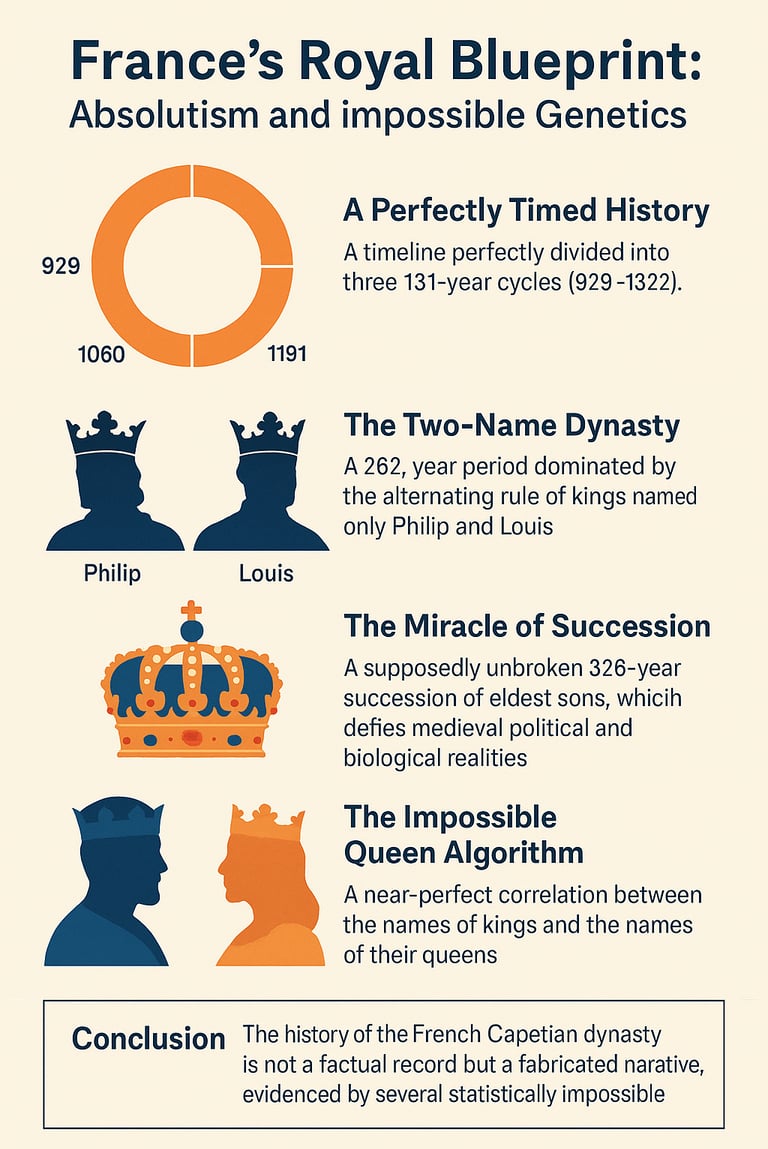France's Royal Blueprint: Absolutism and Impossible Genetics
The history of the French Capetian dynasty is not a factual record but a fabricated narrative, evidenced by several statistically impossible patterns. The article highlights four main anomalies: 1) A timeline perfectly divided into three 131-year cycles (929-1322). 2) A 262-year period dominated by the alternating rule of kings named only Philip and Louis. 3) A supposedly unbroken 328-year succession of eldest sons, which defies medieval political and biological realities. 4) A near-perfect correlation between the names of kings and the names of their queens. These patterns, impossible to achieve by chance, suggest the French royal history was artificially constructed to create a "royal blueprint" of divinely ordained stability and legitimacy.
CLASSICS
10/8/20253 min read
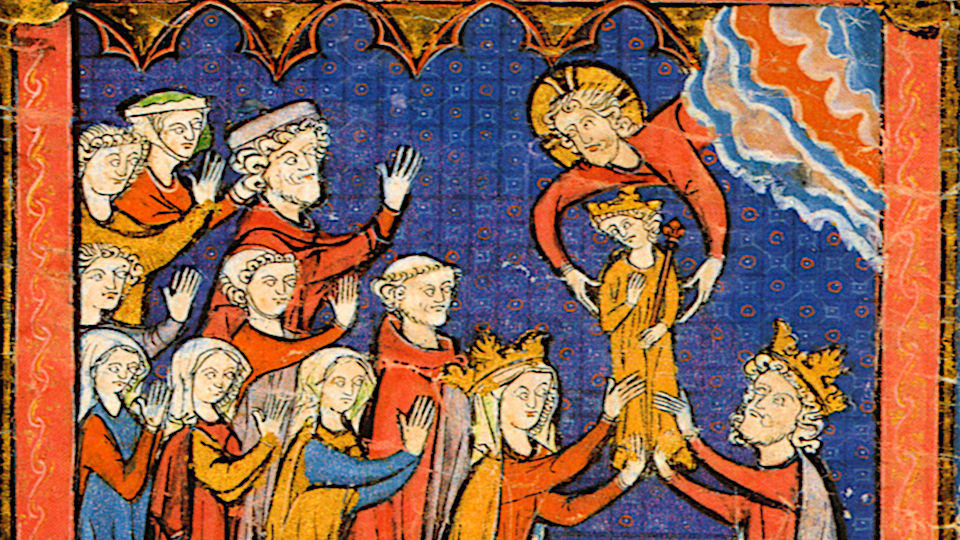

The history of the French monarchy, particularly the powerful Capetian dynasty, is often portrayed as a model of stability and divinely ordained succession. For centuries, the kingdom of France seemed to defy the chaos that engulfed its neighbors, producing a lineage of kings so perfect it appeared to be guided by a divine hand.
But what if this perfection is not a sign of divine favor, but of artificial construction? What if the historical record itself was engineered to create a flawless narrative? A closer examination of the French royal timeline reveals a system so rigid, so numerically perfect, and so statistically impossible that it points not to history, but to a meticulously designed blueprint.
A Perfectly Timed History
The first sign of an artificial structure appears in the very division of the timeline. The period of French history from 929 to 1322 is perfectly divisible into three distinct periods of exactly 131 years each. Real history, with its messy overlaps of wars, reigns, and eras, does not naturally segment itself into such clean, symmetrical blocks. This perfect mathematical division suggests that the timeline was organized retrospectively to fit a predetermined numerical pattern.

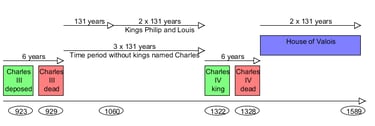
The Two-Name Dynasty
The structure becomes even more suspect when looking at the names of the kings themselves. In the 2 x 131-years span from 1060 to 1322, the French monarchy was dominated by just two names: Philip and Louis. According to the record, these two names ruled in a consistently alternating fashion.
A major European kingdom being ruled by an alternating sequence of only two names for over two and a half centuries is highly improbable. This rigid pattern is more characteristic of a simple algorithm than the complex and unpredictable nature of dynastic politics.
The Miracle of Succession
Perhaps the most glaring anomaly in the official record is France's "miracle of succession." Historians claim that from 988 to 1316—a staggering 328 years—the French crown was passed down in an unbroken line of eldest living sons.
This is a biological and political absurdity. In an era plagued by high infant mortality, disease, infertility, assassinations, and brutal succession wars, the idea that a single royal family could produce a healthy, legitimate male heir who survived to take the throne for over three centuries without a single break is statistically impossible. No other dynasty in Europe came close to such a record. This "miracle" seems less a fact of history and more an idealized invention designed to project an image of unparalleled stability and legitimacy.
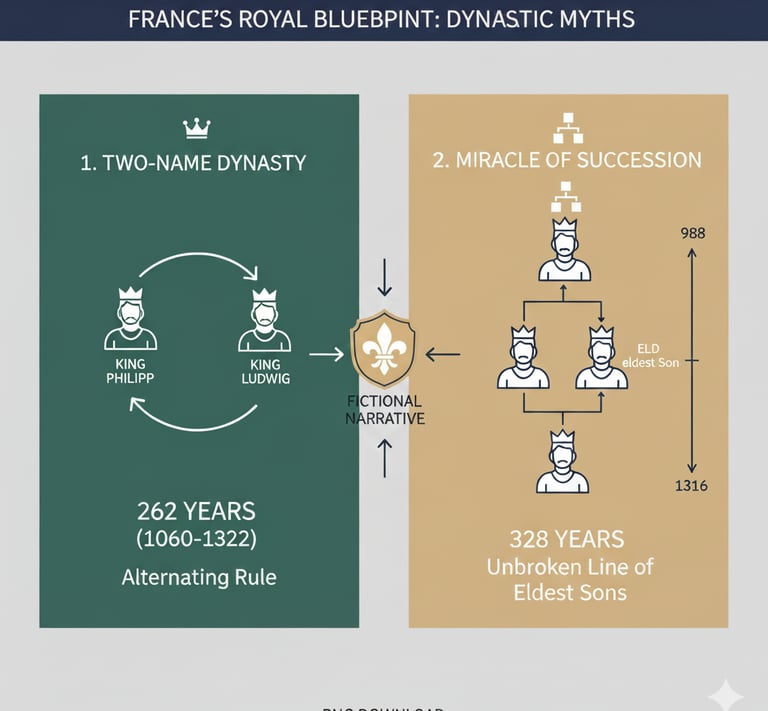

The Impossible Queen Algorithm
The final proof of a fabricated history lies in a pattern so bizarre it defies all logic and probability: the names of the queens are almost perfectly correlated with the names of the kings they married.
The pattern is as follows:
Kings named Philip almost exclusively married queens named Bertha, Elizabeth, Mary, or Joanna.
Kings named Louis almost exclusively married queens named Blanche, Adelaide, or Margaret.
This is not a slight tendency; it is a near-perfect rule that holds for centuries. In the real world, the choice of a royal spouse is a complex affair driven by politics, alliances, and availability, drawing from a wide pool of names across Europe. The probability of such a strict name-pairing system occurring by chance is virtually zero. It is the clearest evidence of all that we are not reading a history, but a script with pre-assigned character names—a royal blueprint where even the queens were part of the code.
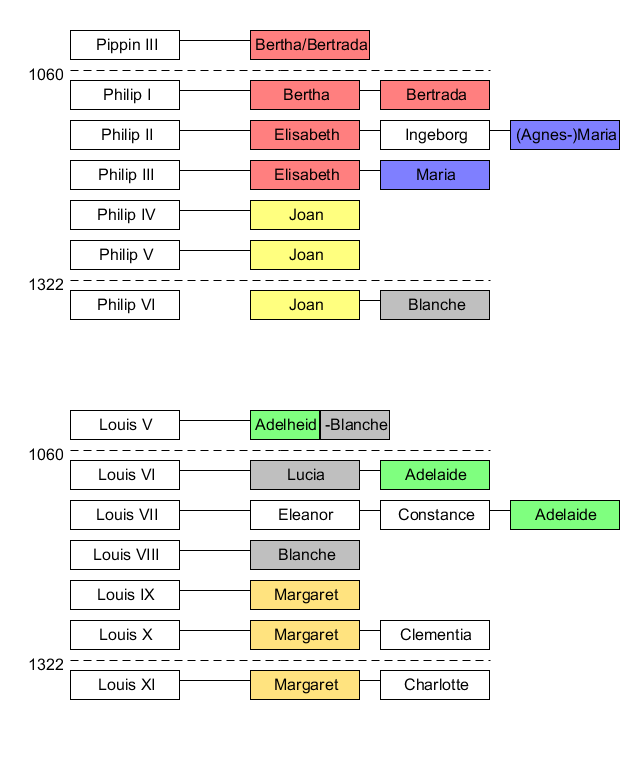

Conclusion: A Monarchy by Design
When viewed together, the evidence is overwhelming. The perfect 131-year cycles, the alternating two-name dynasty, the impossible 328-year succession, and the queen-king name algorithm all point to the same conclusion. The history of the French monarchy was not a natural evolution of power; it was an artificial construct, a story meticulously crafted to create an illusion of perfect, divinely ordained order.
